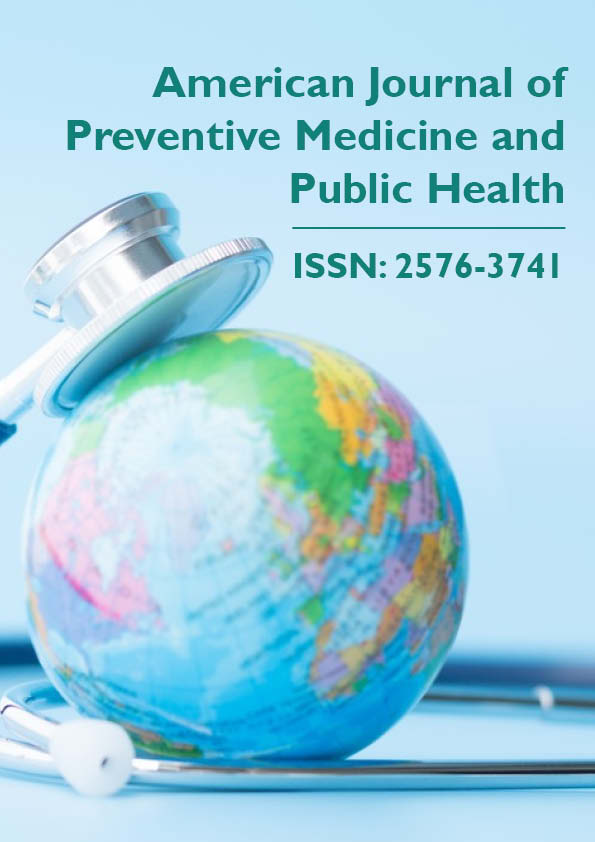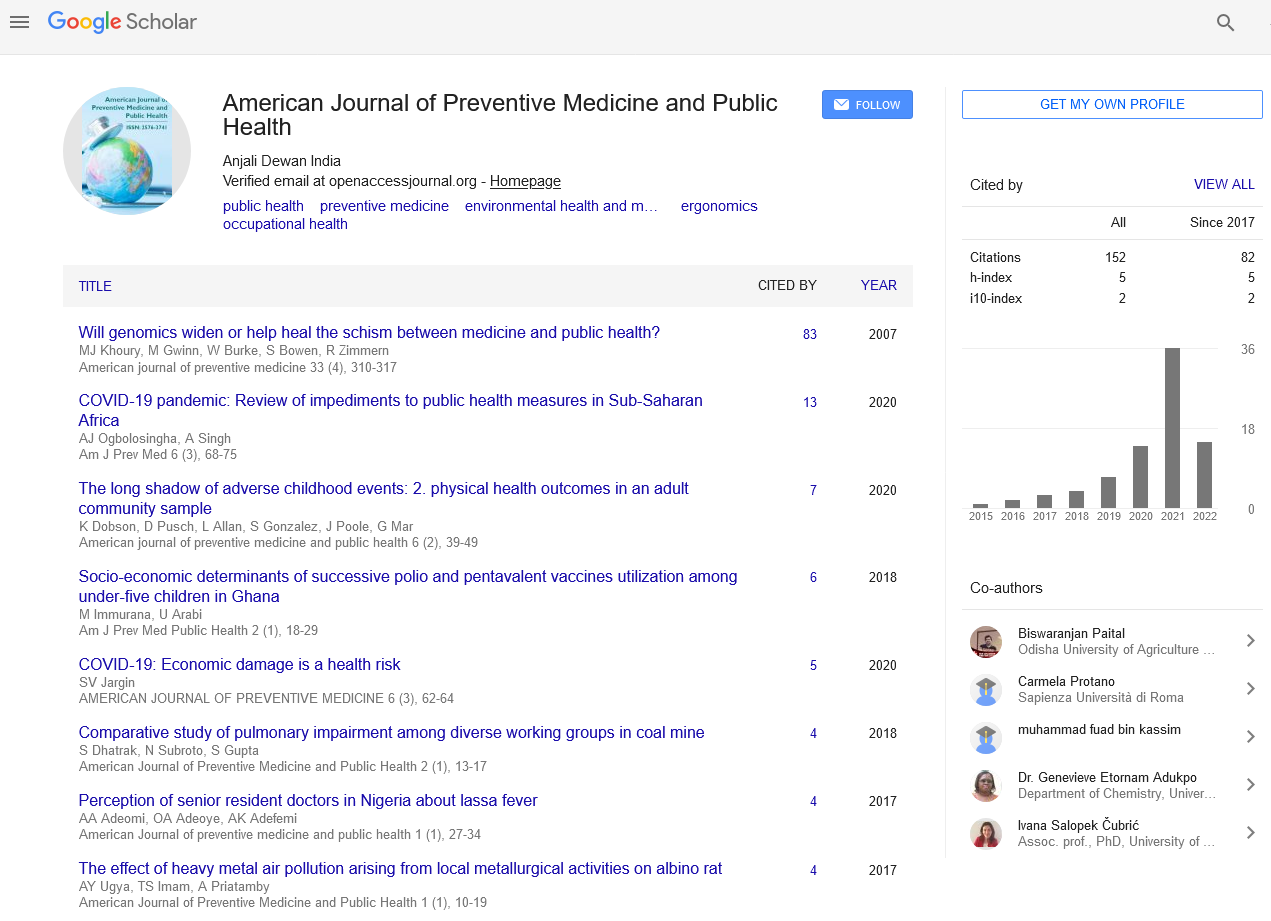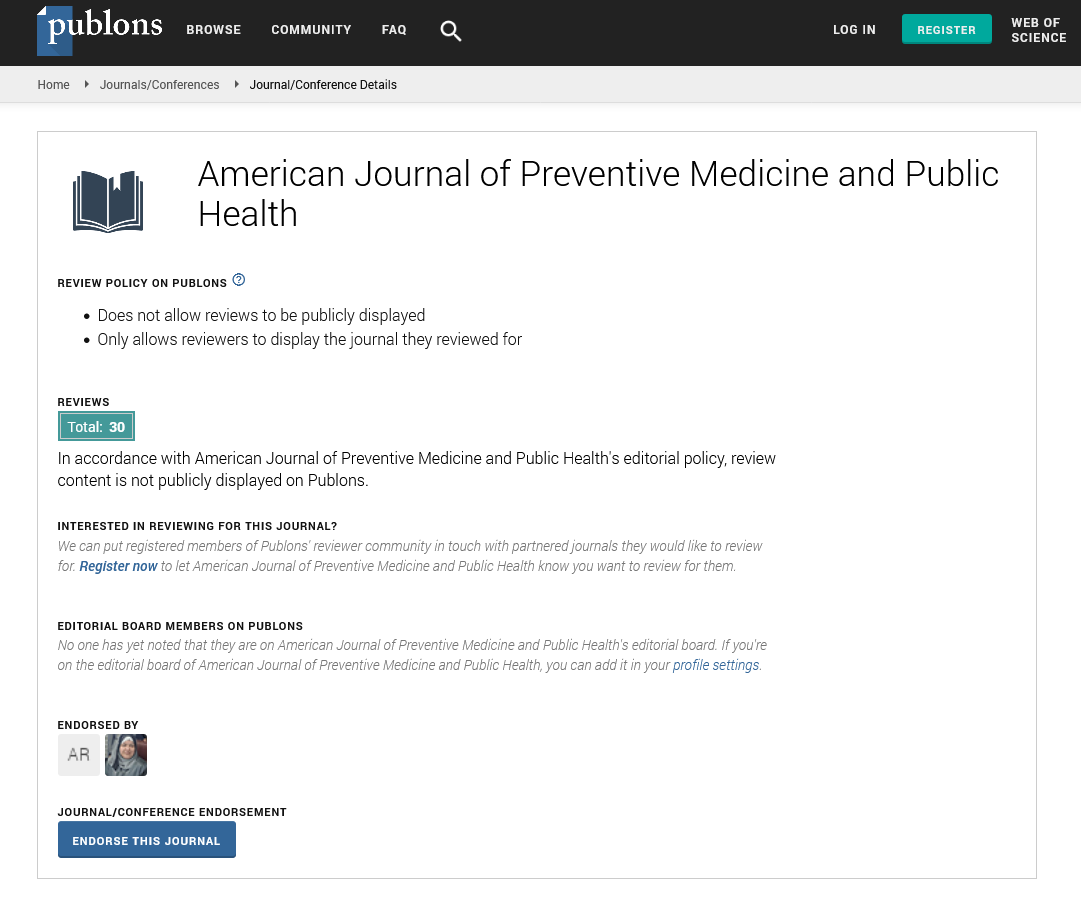Commentary - American Journal of Preventive Medicine and Public Health (2022)
Thrombosis Prevention and Its Medication
Heleen van Ommen*Heleen van Ommen, Department of Neurosciences, Serviço de Neurologia, Hospital de Santa Maria, Lisboa, Portugal, Email: nevelsmichael01@gmail.com
Received: 11-Apr-2022, Manuscript No. AJPMPH-22-64418; Editor assigned: 13-Apr-2022, Pre QC No. AJPMPH-22-64418 (PQ); Reviewed: 28-Apr-2022, QC No. AJPMPH-22-64418; Revised: 03-May-2022, Manuscript No. AJPMPH-22-64418 (R); Published: 10-May-2022
Description
Thrombosis occurs when a blood clot forms inside a blood vessel, blocking blood flow through the circulatory system. When a blood vessel (vein or artery) is injured, the body forms a blood clot with platelets (thrombocytes) and fibrin to prevent blood loss. Even if a blood artery is not damaged, blood clots can form in the body under certain circumstances. An embolus is a clot or a portion of clot that breaks free and begins to migrate across the body.
Thrombosis prevention, also known as thromboprophylaxis, is a medical treatment that prevents thrombosis (blood clots inside blood arteries) in people who are at risk for it. Some persons are more susceptible to blood clot development than others. Because patients are at higher risk owing to immobility, prevention measures or interventions are frequently started after surgery. Blood clots are more likely in cancer patients who are undergoing surgery. Blood thinners are medications that are used to avoid clots. They all have varying effectiveness and safety characteristics. There were 9771 cancer patients in 20 investigations, according to the findings. There was no difference in the impact of different blood thinners on death, clotting, or bleeding, according to the research. Some people experienced less bruising after surgery, while others may have lowered their chance of a blood clot, but the evidence’s dependability ranged from low to moderate.
Medication-based and non-medication-based therapies are available. Changes in lifestyle, the withdrawal of oral contraceptives, and weight loss can all reduce the incidence of blood clots. Both theraMedication-based and non-medication-based therapies are available. Changes in lifestyle, the withdrawal of oral contraceptives, and weight loss can all reduce the incidence of blood clots. Both therapies are frequently utilised in high-risk individuals. Treatments to avoid blood clots are weighed against the possibility of bleeding. One of the goals of blood clot prevention is to reduce venous stasis, which is a major risk factor for blood clots in the legs’ deep veins. Venous stasis can develop after prolonged periods of inactivity. Thrombosis prevention is also advised when travelling by plane. Thrombosis prophylaxis works by preventing blood clots from forming, settling in veins, and evolving into thromboemboli, which can travel through the circulatory system and cause obstruction and tissue death in other organs.
Epidemiology of developing blood clots
The chance of developing deep vein thrombosis, often known as pulmonary embolism, is distinct from the overall risk of blood clot development. Because not all blood clots form in the lower legs, this is the case. Most medical patients in hospitals have at least one risk factor for thrombosis that leads to thromboembolism, and this risk persists weeks after release. Undiagnosed patients who are not treated prophylactically have a 26% probability of dying from an embolism. Another 26% suffer from another embolism. Pulmonary embolism is responsible for between 5% and 10% of all deaths in hospitals, as a consequence of thrombosis.
Medication
Anticoagulants and antiplatelets: For hospitalised patients at risk for VTE, thromboprophylaxis, such as anticoagulants or pre-operative low-molecular weight heparin, is beneficial. Obesity, sickness, malignancies, extensive surgeries, and immobility are all risk factors that could affect the dosage. Anticoagulant drugs prevent blood clots from forming in persons who are at high risk for them. Anti-hemolytic drugs are used to treat blood clots that have already formed (“clot busters”). Despite its effectiveness, thromboprophylaxis is underutilised, despite the fact that hospital notifications (computer or human) are linked to higher prescription and reduced symptomatic VTE.
Copyright: © 2022 The Authors. This is an open access article under the terms of the Creative Commons Attribution NonCommercial ShareAlike 4.0 (https://creativecommons.org/licenses/by-nc-sa/4.0/). This is an open access article distributed under the terms of the Creative Commons Attribution License, which permits unrestricted use, distribution, and reproduction in any medium, provided the original work is properly cited.







